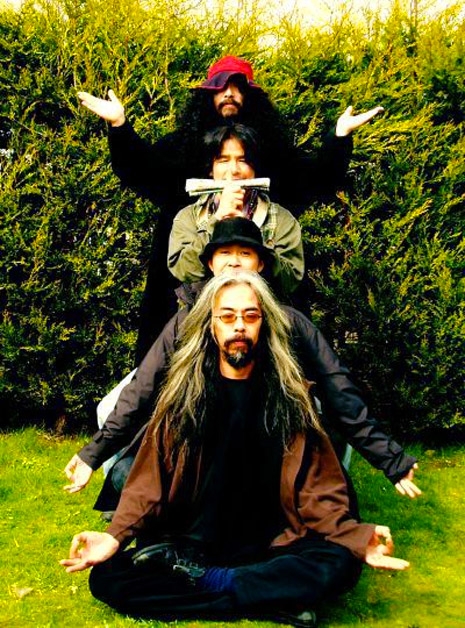
For almost twenty years, Japan’s avant-psych band Acid Mothers Temple have been expanding heads with a striking alloy of ideas grokked from acid, Kraut, and prog with notions gleaned from 20th Century classical music. So the idea of them remaking composer Terry Riley’s landmark of minimalism “In C”—which they did, in 2001—isn’t so out of character. If you want to get record-collector fussy about it, the remake was done by “Acid Mothers Temple & the Melting Paraiso U.F.O.” Not unlike Caroliner, AMT like to append different endings to their name, resulting in probably as many band names as lineups for them by now. As for Riley’s 1964 composition, I am powerless to describe it better than its Wiki entry:
In C consists of 53 short, numbered musical phrases, lasting from half a beat to 32 beats; each phrase may be repeated an arbitrary number of times. Each musician has control over which phrase he or she plays: players are encouraged to play the phrases starting at different times, even if they are playing the same phrase. In this way, although the melodic content of each part is predetermined, In C has elements of aleatoric music to it. The performance directions state that the musical ensemble should try to stay within two to three phrases of each other. The phrases must be played in order, although some may be skipped. As detailed in some editions of the score, it is customary for one musician (“traditionally… a beautiful girl,” Riley notes in the score) to play the note C in repeated eighth notes, typically on a piano or pitched-percussion instrument (e.g. marimba). This functions as a metronome and is referred to as “The Pulse”.
The Riley recording of “In C” was released in 1968 by Columbia Masterworks, but given the fluid nature of the composition, which can be performed by pretty much any number of musicians, on any variety of instruments, and for any duration, his needn’t be considered canonical, and it’s been performed and recorded in a multitude of surprising ways. There’s a solo trombone version on YouTube, even. But here’s the first half of Riley’s “original” version, for comparison’s sake.
And here’s Acid Mothers Temple’s recording, in all its luminous, lysergic, drop-dead gorgeous glory.






